Top 4 Traditional NOLA Dishes You Must Try
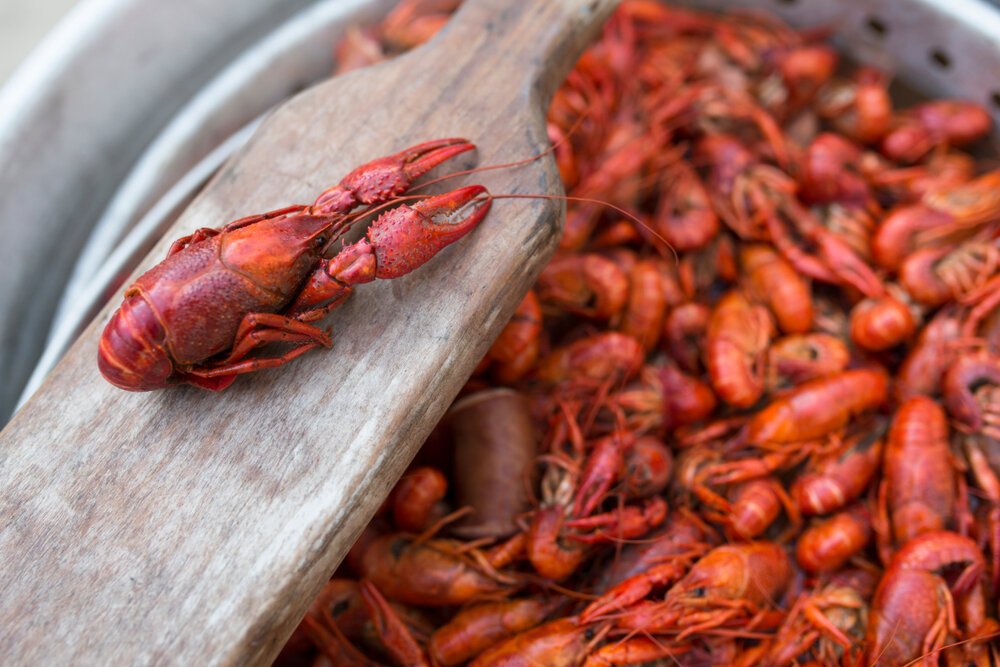
The Best New Orleans Food the Big Easy Has to Offer The Big Easy, with its diverse mixture of people, has inspired some fantastic cuisine. Settlers to the region figured out how to live off the land and utilize all available resources to make their food. For example, the Louisiana Bayous are home to many different types of vegetation and wildlife that have been consumed by New Orleanians for years. When you’re visiting New Orleans, whether, for Mardi Gras or a summer festival, there are a few traditional dishes that everyone should try at least once. The city is the perfect foodie getaway at any time of year. Here is a brief list of the top 7 traditional New Orleans cuisines every visitor should order. Which one first? We’ll let you decide! 1- Jambalaya Jambalaya dates back to the Spanish colonists and is a take on traditional paella. Jambalaya is a mix of rice, vegetables, meat, or seafood, depending on your food preference, and an assortment of different spices thrown into the mix. The best part about this dish is that the taste and recipe can vary depending on the New Orleans section. Try some delicious jambalaya at Jacques-Imo’s Café located in the Garden District of New Orleans. 2 – Crawfish Crayfish, commonly referred to in New Orleans as Crawfish, has been a staple food for many generations. These small crustaceans are so popular that you can find them added to many different dishes. If your palette is more on the fancy side, give crawfish etouffee a try. This French-inspired dish is similar to gumbo; however, it is traditionally served over rice. If you prefer to keep it simple, grab a bucket of steamed crawfish for a mouthwatering meal. Just make sure you have plenty of melted butter nearby. 3 – Gumbo Don’t be surprised if you find gumbo listed on many menus around New Orleans. This traditional stew can be traced back to both French and West African food origins. The ingredients can vary, and you’ll find lots of different recipes. However, the gumbo typically calls for various vegetables, such as onions, celery, and peppers. Along with either sausage, chicken, or seafood (a personal favorite), you must get that piece of french bread on the side. It’s hard to get bored with gumbo with so much variety, plus it’s perfect for enjoying on a winter day. Stop by the best restaurant in New Orleans for gumbo, the Gumbo Shop conveniently located in the French Quarter for a tasty bowl of gumbo. 4 – King Cake Don’t forget to try a king cake, which is traditionally available during Mardi Gras. If you decide to come out for Mardi Gras, you’re bound to come across king cake. The cake is symbolic of the biblical story about three wise men who visited baby Jesus shortly after his birth. King cakes are a mix of cinnamon roll and coffee cake topped with colorful icing on top. There is a plastic baby toy hidden in each cake to represent baby Jesus, so don’t eat too fast. 5- Red Beans and Rice In New Orleans, creamy and comforting red beans and rice is served on Monday. The dish is made with slow-cooked dried Camellia red beans and spiked with ham hock and spicy sausage. For almost 40 years, Riccobono’s Peppermill has been observing the Monday tradition, but you can order it any other day of the week too. 6- Beignets The first thing most tourists want to eat when in New Orleans is a beignet from Cafe du Monde, and why not? They are a fantastic square donut fried and covered with powdered sugar. Stop by the French Quarter and Cafe du Monde, get a beignet and coffee with chicory, and you are on your way to a real New Orleans day. 7- The Po-Boy Many of the restaurants of New Orleans offer the iconic Po-Boy. It is a gut-filling overstuffed sandwich between to pieces of french bread. One of the best you can get in New Orleans happens to be at Bears PoBoy’s at Gennaro’s. Their stand out po-boy is the roast beef. Other popular flavors are the pork po-boy, oyster po-boy, the shrimp and lobster po-boys, and many more. So Much Good Food With so many delights to feast upon, the restaurants in New Orleans offer the best of Cajun and Creole traditional dishes. The French Quarter has long boasted the best of everything from the above delicacies to the olive salad, bananas foster, pralines, and more. Whether it is your first trip to the French Quarter or choose to go out to one of the many yummy restaurants New Orleans has to offer, the food there is a massive part of the experience. So, come on down to a New Orleans restaurant or two. Pick the restaurant that has the food you want to try first, top it off with bananas foster with a side of ice cream, and you’ll get to experience one of the best meals ever… New Orleans style.
Top 5 Must-Do’s At Mardi Gras 2020

Don’t stress trying to create the perfect itinerary for Mardi Gras in New Orleans. This list will provide you with the top things you must do in New Orleans while attending the festival. Remember, there is so much to do in New Orleans during Mardi Gras and the previous post provided lots of information for planning your trip. So, you’re already off to a great start! To make it even easier here is a list of the top 5 must-do’s at Mardi Gras 2020. 1-Bar-Hopping Along St. Charles Ave Every year parades are held throughout the city. One of the best parade routes is along St. Charles Ave between Napoleon and Canal Street. Here you will find a mixture of people young and old hanging out watching the different floats roll by. There are plenty of bars to pop in and grab a drink. The perfect area for bar-hopping. Don’t forget to taste some delicious local cuisine. From margaritas to local craft beer there is sure to be something for everyone in your group. 2-Dress Up In A Crazy Costume Everyone dresses up for Mardi Gras. Go ahead and wear something crazy. Don’t have any costumes in your closet? No worries, stop by one of New Orleans many costumes and mask shops to get yourself sorted. There are shops located in the French Quarter and Garden District, including Fifi Mahony’s and Bootsy’s Funrock’n. If you’re not into wearing crazy outfits you can opt for dressing in the official colors of Mardi Gras green, gold, and purple. 3-Check Out The Different Krewes The Krewes play a very important role during Mardi Mardi. They are in many ways the ring leaders of the celebrations. If you have the opportunity to be invited to a Krewe Carnival Ball, go. It may be a once in a lifetime experience. If you are not lucky enough to get a personal invite, head over to the Endymion Extravaganza. The Carnival Ball is open to the public all you have to do is buy a ticket. For animal lovers go watch the parade of dogs, hosted by the Mystick Krewe of Barkus. Yes, you may have a chance to meet some of the pups! 4-Try Catching Beads and doubloons during throws While watching the parades keep an eye out for throws. This is when Krewes throw items out to the spectators. Some of the items you can catch include colorful beads, doubloons, or decorative cups, and much more. You may even have a chance to catch a rare item such as Zulu coconuts. Bring home a piece of Mardi Gras! 5-Mardi Gras History Finally, it’s important to take a moment to learn about the history and culture of the festival. Stop by one of the many museums such as Mardi Gras World. Or take one of the Mardi Gras guided tours. This is a good option for anyone visiting New Orleans outside of Mardi Gras.
Best Mardi Gras Throws
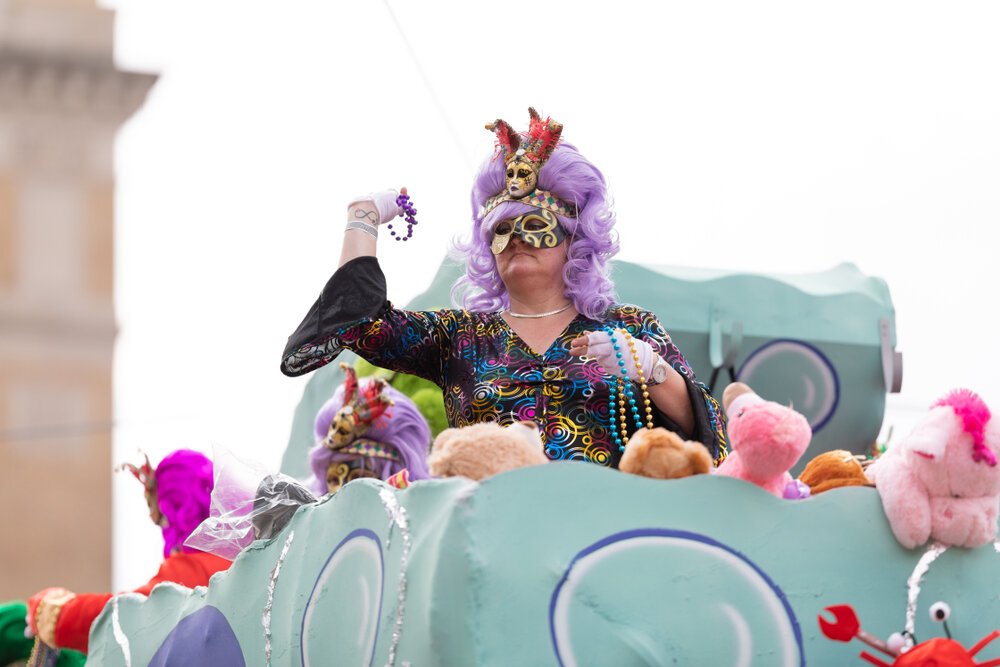
When you think of Mardi Gras, beads typically come to mind. In fact, there are many different items spectators can catch while watching the parades. Many of the New Orleans krewes work throughout the year to come up with creative items to throw during the parades. For regulars, it’s a challenge to collect all the different items and some of the local businesses in the city like to display their stash from parade throws in the window for all to see. Visitors coming to celebrate Mardi Gras for the first time enjoy bringing home parade items because they make for cool souvenirs. For some specialty items, it can get competitive among spectators. The whole family will have fun trying to catch the different Mardi Gras items. If you have small children make sure to keep a close eye as the parades routes tend to be crowded. Consider bringing an empty backpack to store everything that you catch. Here is a shortlist of items commonly thrown during Mardi Gras parades. Mardi Gras Beads By far one of the most popular items you’ll see being thrown at Mardi Gras parades is beads. These colorful beads are coveted by everyone attending the festivities. Mardi Gras beads can be found at many events around the city, not just at the parades. Note: Contrary to popular belief it’s not customary to flash your bare chest when asking for Mardi Gras beads. Doubloons Doubloons are a crowd favorite and first appeared in the 1960s. They are commonly painted in Mardi Gras colors purple, gold, and green. Make sure to watch out when these little pieces of treasure are being thrown as they tend to be scooped up quickly by both children and adults. Decorative Cups It’s also common to see decorative cups being thrown into the crowd. Don’t worry, the cups are made out of plastic. If you have the opportunity to see a collection of Mardi Gras cups you’ll notice a change in design from year to year. High Heels Keep an eye out for rare decorative high heel shoes. This specialty item might not be the best for walking around town in but they will look great as home decoration. Just be sure not to get hit with a flying shoe! Zulu Coconuts Another specialty item that many parade-goers seek is Zulu coconuts. You will only have the opportunity to get one during the Zulu Krewe parade and there is a limited number. The krewe spends a lot of time during the year creating these colorful coconuts. In the past, Zulu coconuts were thrown from moving floats, however, in recent years they have switched to passing the coconuts out to prevent breaking. You’ll have to be standing in the right place at the right time to get one. Keep an eye out for other items such as sunglasses, purses, and even toilet brushes!
LGBTQ Mardi Gras Festival New Orleans
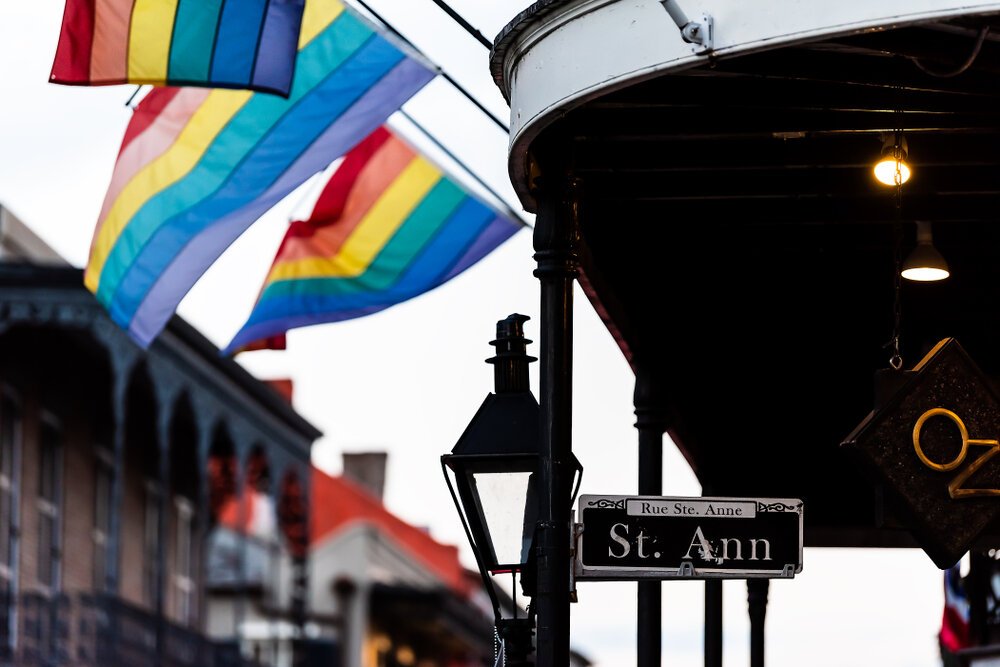
Mardi Gras and the city of New Orleans are LGBTQ friendly. In fact, the Krewe of Yuga founded during the 1950s was the first openly gay group. Some people in the LGBTQ community feel this group helped with igniting The Gay Rights Movement in the US. During the Mardi Gras celebrations, there are many gay carnival balls hosted by different Krewes. When attending these parties expect to see performers in lavish costumes, dancers, food, and drinks. Most of the parties will continue long into the night. If you’re searching for some exciting nightlife look no further than the Mardi Gras carnival balls. Keep in mind, some of the parties may require tickets for entry. Here is a list of gay Krewes that host carnival balls during Mardi Gras. Armeinius Armeinius holds a ball to help keep the history of LGBTQ involvement in Mardi Gras alive. If you want to learn more about the gay community in New Orleans while having a good time, this is a good carnival ball to check out. Amon-Ra If you want to see some extravagant costumes check out Amon-Ra’s carnival ball. The ancient Egyptian themed gay Krewe was started in the 1960s and has built a reputation for hosting awesome parties. Petronius Another one of the original gay Krewes, this group helped encourage other openly gay Krewes to form. Petronius throws a fun party with lots of drinking, eating, and dancing. Lords Of Leather This krewe hosts a leather themed carnival ball each year. However, this ball takes part in the medieval traditions of carnival. Everyone dresses in leather and masks with a medieval twist. Krewe Of Stars This Krewe was recently founded in 2017. The Krewe of Stars seek to promote theater arts throughout the community. They put on some great performances during Mardi Gras. Definitely worth stopping by! Other LGBTQ Events Carnival balls aren’t the only LGBTQ focused events happening during Mardi Gras. There is a huge costume contest (with cash prizes) held right in the French Quarter and a friendly luncheon at Arnaud’s restaurant with various contests and prizes. Carnival balls are an exciting part of the Mardi Gras traditions. However, there is so much to see and do while in New Orleans. When creating your itinerary, write down the top Mardi Gras events that you want to attend. Remember to be flexible as your itinerary may need to change last minute because of the busy season. Get planning, you won’t regret a trip to Mardi Gras!
MARDI GRAS NEW ORLEANS GUIDE 2024
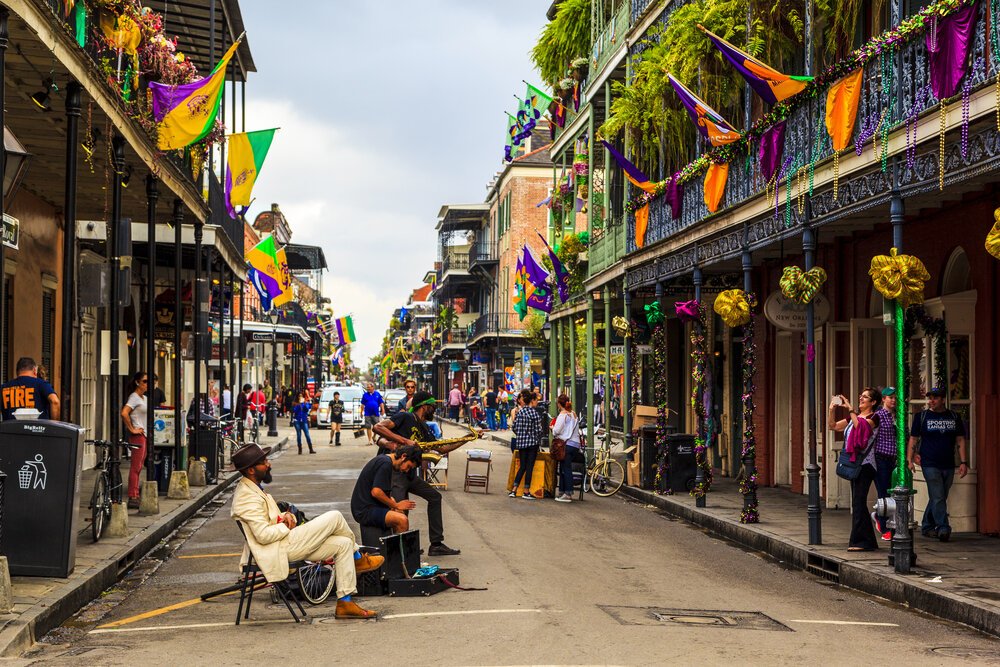
There is so much to do down in NOLA during the Mardi Gras season. But don’t worry about feeling overwhelmed just remember to keep your itinerary simple and flexible, as the city does get busy. This may mean changing up your list of things to do. Make sure to do some research and figure what are the top attractions that you want to see. Also, consider who you’re traveling with to attend Mardi Gras. If you’re traveling with children it’s a good idea to stay away from big party spots. If you’re traveling with friends or as a couple consider going bar-hopping along St. Charles Ave while watching the parades. Locals in the area know how to do Mardi Gras best. Here is a short guide on how to experience Mardi Gras 2020 like a local. Table of Contents Mardi Gras in New Orleans is a vibrant and festive celebration that has a rich history and unique traditions. This guide will provide an overview of the origins of Mardi Gras, its evolution in New Orleans, and the significance of costumes, parades, food, music, and dance. Whether you’re planning to attend Mardi Gras in 2024 or simply want to learn more about this iconic event, this guide will give you a comprehensive understanding of the festivities and key takeaways to remember. Key Takeaways History of Mardi Gras in New Orleans Origins of Mardi Gras Mardi Gras, meaning ‘Fat Tuesday’ in French, has its origins in ancient Roman festivals. It was later adopted by Christians as a period of feasting and celebration before the fasting season of Lent. In the early 18th century, French settlers brought the Mardi Gras tradition to New Orleans, where it has since become an integral part of the city’s culture and identity. The first recorded Mardi Gras parade in New Orleans took place in 1837, organized by a group of masked revelers. Over the years, the celebration grew in popularity and complexity, with various krewes forming to organize and fund the parades. Today, Mardi Gras in New Orleans is a vibrant and extravagant event that attracts visitors from around the world. To fully experience the magic of Mardi Gras in New Orleans, join us at Bayou Swamp Tours. Our knowledgeable guides will take you on an unforgettable journey through the history and traditions of this iconic celebration. Get ready to immerse yourself in the sights, sounds, and flavors of Mardi Gras as we explore the vibrant streets of New Orleans during this festive season. Mardi Gras in New Orleans Mardi Gras in New Orleans is a vibrant and lively celebration that dates back centuries. It is a time when the city comes alive with parades, music, and festivities. The origins of Mardi Gras can be traced back to medieval Europe, but it has evolved into a unique and iconic event in New Orleans. One of the highlights of Mardi Gras in New Orleans is the elaborate and colorful costumes worn by participants. Costumes range from traditional designs to more contemporary and creative outfits. The use of masks is also an important part of the celebration, allowing people to hide their identities and fully immerse themselves in the spirit of Mardi Gras. During Mardi Gras, the streets of New Orleans are filled with the sounds of music and the rhythms of dance. Traditional Mardi Gras music, influenced by jazz and other genres, sets the festive atmosphere. People gather to dance and celebrate, creating a sense of joy and camaraderie. If you’re planning to experience Mardi Gras in New Orleans, here are a few tips: Mardi Gras in New Orleans is an unforgettable experience that showcases the city’s rich culture and vibrant spirit. Join us at Bayou Swamp Tours to immerse yourself in the excitement and tradition of this iconic celebration! Evolution of Mardi Gras Traditions Mardi Gras in New Orleans has evolved over the years, adapting to the changing times while still honoring its rich history. One significant evolution is the inclusion of more diverse and inclusive themes in the parade floats and costumes. In recent years, technology has also played a role in the evolution of Mardi Gras traditions. Social media platforms have become a powerful tool for promoting and sharing the Mardi Gras experience. From live streaming parades to creating virtual costume contests, technology has allowed people from all over the world to participate in the festivities, even if they can’t be physically present in New Orleans. As Mardi Gras continues to evolve, it remains a vibrant and dynamic celebration that embraces both tradition and innovation. The spirit of Mardi Gras lives on, bringing joy, excitement, and a sense of community to all who partake in this annual extravaganza. Mardi Gras Parades and Krewes Popular Mardi Gras Parades One of the most anticipated events during Mardi Gras in New Orleans is the Krewe of Bacchus parade. Established in 1968, the Krewe of Bacchus is known for its extravagant floats and celebrity king. Each year, a well-known celebrity is chosen to reign as the Bacchus king, adding an element of excitement to the parade. Another popular parade is the Krewe of Endymion. Founded in 1967, the Krewe of Endymion is one of the largest and most extravagant parades in Mardi Gras history. It features massive floats, marching bands, and throws that delight the crowds. The Krewe of Zulu parade is another must-see event. Dating back to 1909, the Krewe of Zulu is known for its unique throws, including hand-painted coconuts. The parade also features vibrant costumes and lively music. If you’re looking for a family-friendly parade, the Krewe of Orpheus is a great choice. Founded in 1993, the Krewe of Orpheus is known for its spectacular floats and celebrity riders. The parade route passes through the historic Garden District, providing a picturesque backdrop for the festivities. Notable Mardi Gras Krewes When it comes to Mardi Gras in New Orleans, the Krewes play a significant role in organizing and hosting the extravagant parades and balls. These Krewes are known for their elaborate floats, dazzling costumes, and lively
Discover the Best Mardi Gras Museum in New Orleans
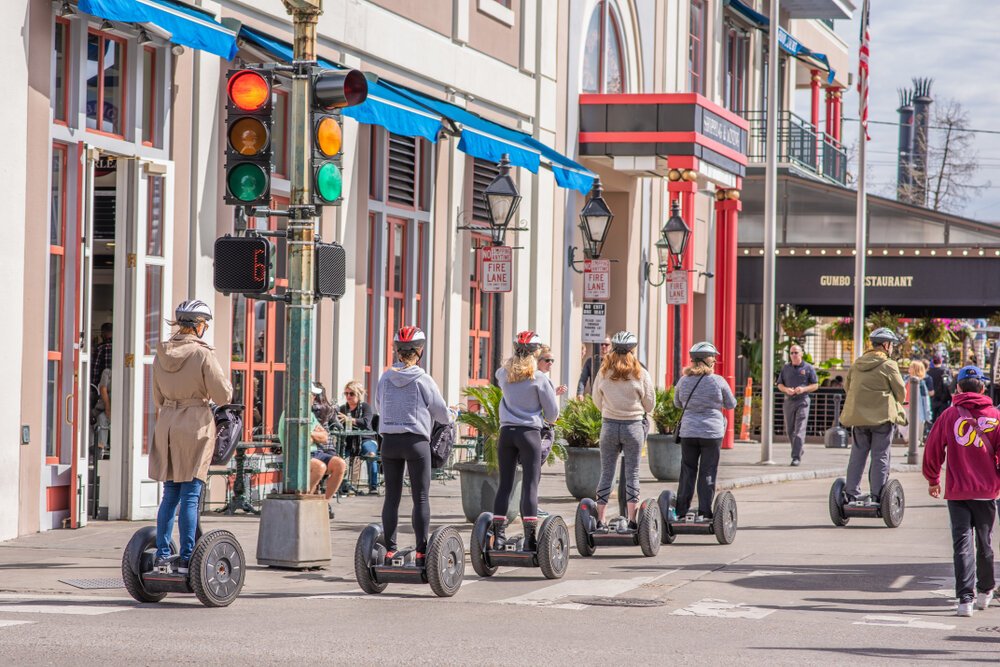
Mardi Gras is a vibrant and colorful celebration that has become synonymous with the city of New Orleans. With a rich history and unique traditions, Mardi Gras has captivated locals and visitors alike for centuries. One of the best ways to explore and understand the significance of Mardi Gras is by visiting the top Mardi Gras museums in New Orleans. These museums not only preserve the history of Mardi Gras but also educate visitors about its cultural importance. From elaborate float designs to intricate costumes and masks, these museums showcase a wide range of artifacts that highlight the creativity and artistry behind Mardi Gras. Additionally, visitors can engage in interactive experiences such as mask-making workshops and virtual parades, allowing them to immerse themselves in the festive spirit of Mardi Gras. Discover the best Mardi Gras museum in New Orleans and uncover the magic and beauty of this iconic celebration. Key Takeaways History of Mardi Gras in New Orleans Origins of Mardi Gras Mardi Gras has its roots in ancient pagan celebrations that marked the arrival of spring. The festival was later adopted by Christians as a way to prepare for the season of Lent. The term ‘Mardi Gras’ itself means ‘Fat Tuesday’ in French, referring to the practice of indulging in rich foods before the fasting period. Over time, the celebration evolved into the elaborate and vibrant event we know today. Mardi Gras in New Orleans Mardi Gras in New Orleans is a vibrant and lively celebration that has been a part of the city’s culture for centuries. It is a time when the streets come alive with colorful parades, music, and dancing. The origins of Mardi Gras can be traced back to medieval Europe, but it has evolved into a unique and distinct tradition in New Orleans. One of the highlights of Mardi Gras in New Orleans is the elaborate and intricately designed floats that are featured in the parades. These floats are a true work of art, with each one telling a story or representing a theme. Float designers and construction teams spend months creating these masterpieces, using a variety of materials and techniques. In addition to the floats, Mardi Gras in New Orleans is also known for its stunning costumes and masks. These costumes are often handmade and can be incredibly detailed and ornate. They are a reflection of the creativity and craftsmanship of the people of New Orleans. If you’re visiting New Orleans during Mardi Gras, be sure to take part in the festivities and experience the magic of this unique celebration. Whether you’re watching the parades, trying on a mask, or admiring the floats, Mardi Gras in New Orleans is an experience like no other. Evolution of Mardi Gras Celebrations Mardi Gras celebrations in New Orleans have undergone significant changes over the years. From its humble beginnings as a small community event, Mardi Gras has evolved into a grand spectacle that attracts millions of visitors each year. One notable change in Mardi Gras celebrations is the introduction of themed parades. In the early days, parades consisted mainly of horse-drawn carriages and marching bands. However, in recent years, parades have become more elaborate, with each parade having a unique theme and featuring intricately designed floats. Another significant evolution is the incorporation of technology into Mardi Gras celebrations. Nowadays, parade-goers can use mobile apps to track the progress of parades, view live streams of the festivities, and even participate in virtual parades. Overall, the evolution of Mardi Gras celebrations in New Orleans reflects the city’s vibrant and dynamic culture, constantly adapting to the changing times while preserving its rich traditions. The Importance of Mardi Gras Museums Preserving Mardi Gras History Preserving the rich history of Mardi Gras is a crucial mission for the Mardi Gras museums in New Orleans. These museums play a vital role in safeguarding the traditions, customs, and stories that have shaped Mardi Gras celebrations over the years. One way they accomplish this is by collecting and preserving a wide range of artifacts related to Mardi Gras. These artifacts include elaborate costumes, intricately designed masks, and historical photographs that provide a glimpse into the past. In addition to collecting and preserving artifacts, the museums also document the history of Mardi Gras through extensive research and interviews with key figures in the Mardi Gras community. This ensures that the stories and traditions are accurately recorded and passed down to future generations. To further engage visitors in the preservation of Mardi Gras history, the museums offer interactive exhibits and educational programs. These programs allow visitors to learn about the significance of Mardi Gras and its impact on the culture of New Orleans. By preserving Mardi Gras history, the museums ensure that the traditions and spirit of this vibrant celebration continue to thrive for years to come. Educating Visitors When visiting a Mardi Gras museum in New Orleans, one of the key aspects is the educational experience it offers to visitors. These museums aim to provide a deeper understanding of the history, traditions, and cultural significance of Mardi Gras. Through interactive exhibits, informative displays, and knowledgeable staff, visitors can learn about the origins of Mardi Gras, the evolution of the celebrations in New Orleans, and the various customs associated with this vibrant festival. To enhance the educational experience, some museums also offer workshops and demonstrations. Visitors can participate in mask-making workshops, where they can learn about the artistry and craftsmanship behind the intricate masks worn during Mardi Gras. These hands-on activities allow visitors to engage with the cultural practices and traditions of Mardi Gras in a meaningful way. Additionally, museums may provide virtual tours or behind-the-scenes experiences, giving visitors a glimpse into the behind-the-scenes preparations and logistics of Mardi Gras. These interactive experiences offer a unique perspective and allow visitors to appreciate the scale and complexity of organizing such a grand celebration. Overall, Mardi Gras museums in New Orleans play a vital role in educating visitors about the rich history and cultural significance of this iconic festival.
Mardi Gras Food Ideas & Where To Find It
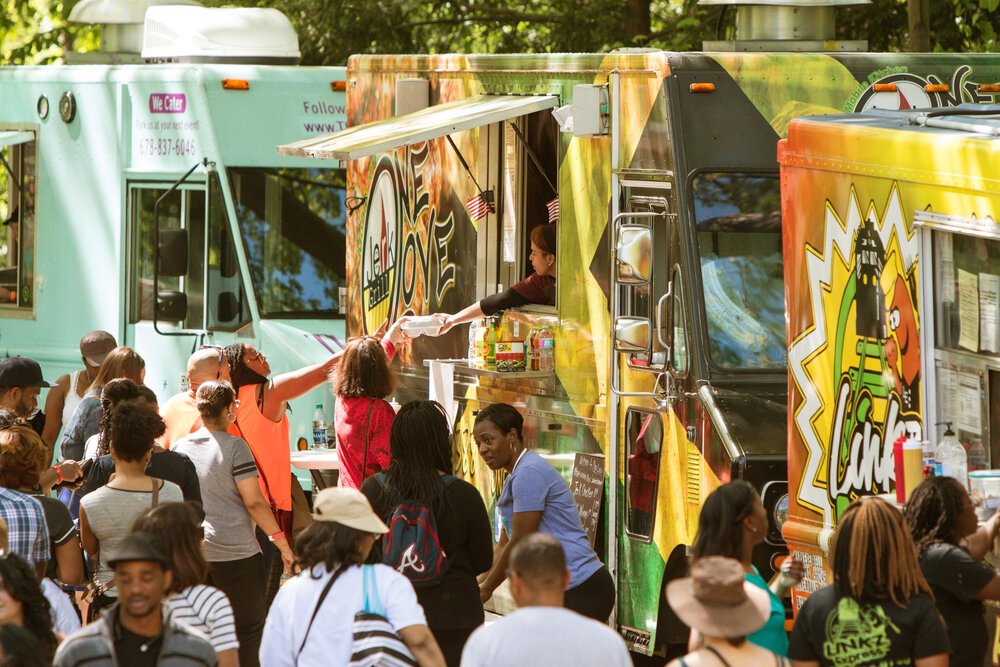
New Orleans is a melting pot of food. There are so many different types of cuisine to taste while visiting the city. When visiting during the Mardi Gras festival you may experience long waiting times at restaurants. No worries, there are lots of options for grabbing a quick bite. Throughout the city, you’ll find plenty of food trucks, casual dining, and cafés. Food trucks are a great option for grabbing a bite while on the go, keep your eyes peeled as the trucks will most-likely be parked nearby the different events. Look for casual dining outside of the French Quarter as this will be your best bet for finding a table. There are tons of cafés located around NOLA, perfect for grabbing a coffee in the morning and a sandwich for lunch. Many cafés will also offer Wi-Fi to guests. Finally, try booking a hotel with a bar or restaurant, this will make it easier and more convenient when the city is at its busiest. Here are the best ways to grab food during Mardi Gras. Food Trucks Most of the food trucks change their location daily, so you’ll have to keep a lookout while exploring the city. Some trucks to watch out for include Food Drunk and Foodie Call. However, now there are a few food trucks that have a permanent address. In the Garden District check out La Cubana for some tasty Cuban and Latin American food. Or Crepes a La Cart is another good choice if you’ll looking for something sweet and savory. The best part is that new food trucks are popping up every year! Cafés There are cafés scattered throughout the city making is super easy to grab some coffee and a quick bite to eat. In the morning, pop in a café for some coffee/tea and a muffin. Many cafés will also have a selection of sandwiches available for purchase. Check out Antoine’s Annex conveniently located in the French Quarter for a delicious full breakfast. If you’re trying to satisfy a sugar craving look no further than La Boulangerie located in the Garden District. This coffee shop is also a full bakery offering a selection of pastries, muffins, pies, and so much more. Finally, for lunch head to Maple Street Patisserie et Deli also located in the Garden District for the perfect deli sandwich. Casual Dining Your best bet for grabbing a table during lunch or dinner is outside the French Quarter. This is a nice option for couples or families looking to get away from the crowds for a couple of hours. Casual dining offers the chance to sit down and enjoy your meal. You can’t leave New Orleans without eating some seafood. Head to the Art District and check out Peche Seafood Grill for the best seafood around. If you’re in the mood for Italian stop by the Domenica Restaurant located in the Roosevelt Hotel for a tasty meal. Top Traditional Mardi Gras Dishes Gumbo Gumbo is a traditional Mardi Gras dish that originated in Louisiana. It is a flavorful stew that typically includes a combination of meat or seafood, vegetables, and spices. The key ingredient in gumbo is the roux, which is made by cooking flour and fat together until it reaches a rich, dark brown color. This gives the gumbo its distinctive flavor and thickens the stew. Gumbo is often served over rice and is a popular dish during Mardi Gras celebrations. It is a hearty and satisfying meal that warms the soul. There are many variations of gumbo, with different regions and families having their own unique recipes. Some popular types of gumbo include seafood gumbo, chicken and sausage gumbo, and vegetarian gumbo. If you’re looking to try gumbo during Mardi Gras, you can find it at various restaurants and food stalls in Louisiana and other areas with Mardi Gras celebrations. It is also a common dish at Mardi Gras food festivals, where you can sample different types of gumbo from local chefs and vendors. Jambalaya Jambalaya is a classic dish that originated in Louisiana and is commonly associated with Mardi Gras. It is a flavorful one-pot dish that combines rice, meat, and vegetables. The key ingredients in Jambalaya are sausage, chicken, and shrimp. The dish is seasoned with a blend of spices, including paprika, cayenne pepper, and thyme, which give it a spicy and aromatic flavor. Jambalaya is traditionally cooked in a large cast-iron pot, which helps to develop a rich and smoky flavor. The dish is often served with a side of cornbread or French bread. Here is a simple recipe for Jambalaya: Tip: For an extra kick of flavor, add a splash of hot sauce to your Jambalaya. Crawfish Etouffee Crawfish Etouffee is a classic Cajun dish that is a must-try during Mardi Gras. This rich and flavorful dish features tender crawfish tails smothered in a thick and savory sauce made with onions, bell peppers, celery, and a blend of spices. The dish is typically served over a bed of fluffy white rice, allowing the flavors to meld together perfectly. Etouffee is a French word that means “smothered” or “suffocated,” which perfectly describes the cooking method for this dish. The crawfish tails are cooked low and slow in the sauce, allowing them to become tender and soak up all the delicious flavors. If you’re looking to make Crawfish Etouffee at home, here’s a simple recipe to get you started: Tip: For an extra kick of flavor, add a splash of hot sauce or a sprinkle of cayenne pepper to the dish. King Cake King Cake is a traditional Mardi Gras dessert that is enjoyed during the carnival season. It is a sweet, yeasted cake that is typically decorated with colorful icing and sprinkles. The cake is often shaped like a ring or oval, symbolizing the unity of the community. The most important ingredient in a King Cake is the hidden plastic baby figurine, which represents good luck and prosperity. The person who finds the baby in their slice of cake is said to have good fortune for the coming year. Tip:
Mardi Gras New Orleans Guide 2020
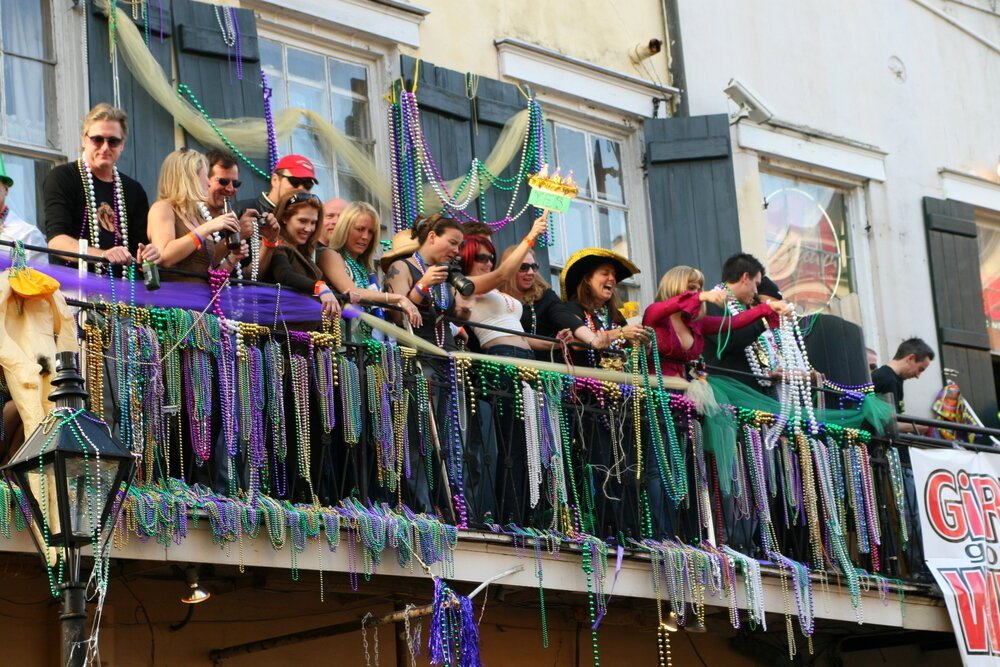
There is so much to experience in New Orleans, from exploring our many neighborhoods to stepping into the Louisiana wilderness. The city is also known for its many festivals, the most famous being Mardi Gras. Mardi Gras is a time when the entire city comes to life with both locals and tourists to celebrate the carnival season. The 2020 festivities are right around the corner and If you enjoy having a good time while watching parades, eating local cuisine, learning about NOLA history, and taking in the nightlife, then this is the festival for you. Many people believe Mardi Gras is all about partying, that is simply not true. Yes, if you are searching for some amazing nightlife you will find it here. However, Mardi Gras is also an experience for the entire family. Here is a list of some of the ways to enjoy this time-honored tradition. Best Drinking Spots At Mardi Gras What better way to watch a parade than with a drink in hand. Your best bet is to find a spot along St. Charles Ave between Napoleon and Canal Street. If you’re searching for a younger crowd, look no further than Fat Harry’s located right on the corner of St. Charles Ave and Napoleon. This is the perfect place to grab a large beer or cocktail. Want to experience some local history while sipping on a Bloody Mary? Head over to Columns Hotel for some historical charm and delicious mixed drinks. If you have time try the food! Learn more about the top spots to grab a drink at Mardi Gras. Mardi Gras For Families Families have been participating in the Mardi Gras celebrations since the beginning. Children enjoy watching the parades with Krewes dressed in magnificent costumes performing on top colorful floats. The city does become very crowded during this time, so be prepared. It’s a good idea to stay away from the touristy areas when choosing a spot to hangout. Make sure to bring some bottled water and small snacks as it may be difficult to get food without a wait. Totally worth it, your family will have a blast! Read on to learn the best ways for families to celebrate Mardi Gras. Do As The Locals Do During Mardi Gras Here is the best way to experience Mardi Gras like a local. First, get the lay of the land around New Orleans by checking out the public transportation system. Many hotels will have maps available with attractions and streetcar schedules. Most information can also be easily found on Google Maps etc. Many visitors opt to walk or bike around the city because of the crowds. Next, you’ll need to dress the part. Don’t be afraid to wear crazy costumes and masks. There are plenty of costume shops that will provide you with the essentials. Finally, make sure to respect the city of New Orleans. This doesn’t mean you can’t party hard, just be mindful of the local laws. Contrary to popular belief it’s not customary to flash your bare chest when asking for Mardi Gras beads. Pro Tip: Download WDSU’s mobile app to your smartphone and track all the best parade routes. Learn more about how the locals celebrate Mardi Gras. Krewes of Mardi Gras A Krewe is a NOLA social group that organizes and participates in Mardi Gras parades and festivities. There are many different Krewes that are organized by seniority. The first group is ‘Royalty’ and consists of the krewes Rex and Zulu. Rex dates back to 1872 and has been an international symbol of Mardi Gras and New Orleans ever since. The Zulu Krewe is equally as important and has had some famous members, including Louis Armstrong. Another group is the ‘Super Krewes’ which is made up of Endymion, Bacchus, and Orpheus. Endymion is the largest Krewe and its name translates to the god of fertility and eternal youth. Bacchus was founded in the 1960s by a group of businessmen interested in reinventing some of the Mardi Gras festivities. Orpheus is a newer Krewe founded in the 1990s by a group of musicians, including Harry Connick Jr. Other groups are the ‘Walking Krewes & Parades’, ‘Rolling Parades’, and ‘Truck Parades’. Take a moment to learn about the great Krewes of Mardi Gras. LGBTQ Mardi Gras Mardi Gras and the city of New Orleans are LGBTQ friendly. The Krewe of Yuga founded during the 1950s is an openly gay group. Some in the gay community feel this group helped with igniting The Gay Rights Movement in the US. During the Mardi Gras celebrations, there are several gay carnival balls held by Krewes. Armeinius holds a ball to help keep the history of LGBTQ involved in Mardi Gras alive. Amon-Ra is an ancient Egyptian themed gay Krewe that throws an awesome party. Carnival balls aren’t the only LGBTQ focused events happening during Mardi Gras. There is a huge costume contest (with cash prizes) held right in the French Quarter and a friendly luncheon at Arnaud’s restaurant with various contests and prizes. You won’t regret a trip to Mardi Gras! Learn more about the different carnival balls held during Mardi Gras. Mardi Gras Throws When you think of Mardi Gras, beads always come to mind. In fact, there are many different items spectators can catch while viewing the parades. Doubloons are a crowd favorite and first appeared in the 1960s. Make sure to watch out when these little pieces of treasure are being thrown. It’s also common to see decorative cups being thrown into the crowd. If you have the opportunity to see a collection of Mardi Gras cups you’ll notice a change in design from year to year. A less common item that many people seek is Zulu coconuts. You will only have the opportunity to get one during the Zulu Krewe parade and there is a limited number. Keep an eye out for other items such as sunglasses, purses, and even toilet brushes. Read on to learn about the items
Jazz Music In New Orleans
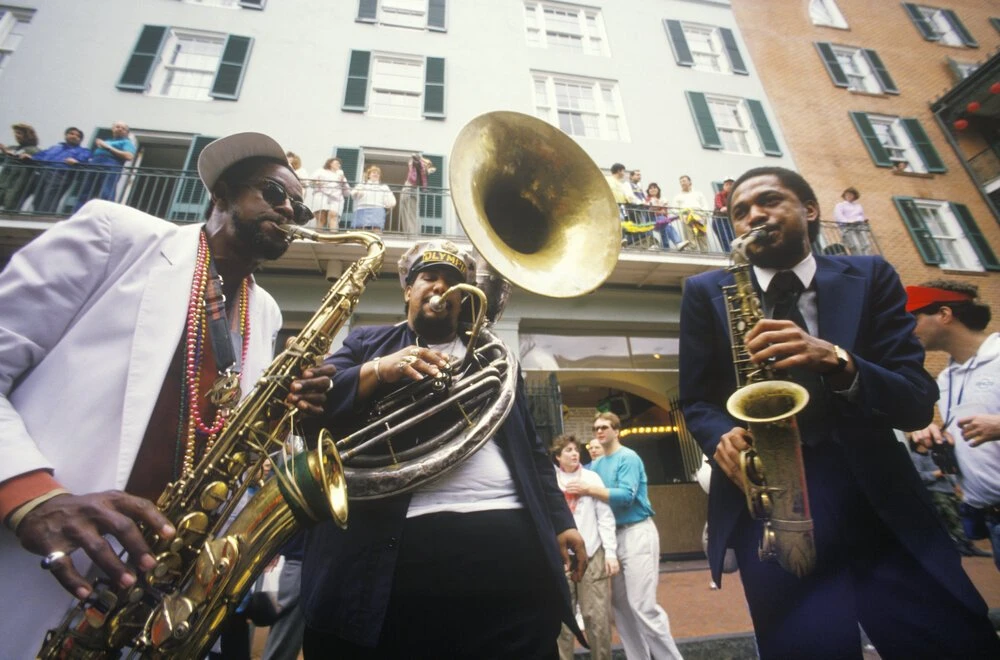
Jazz music has always been essential to the culture of New Orleans. In the early days of the nineteenth century the city was home to many diverse groups of people. This allowed for a mixing of traditions including food, music, and much more. It’s impossible to visit without hearing jazz being played on the streets and in many of the local establishments. Every year the city comes alive to celebrate Mardi Gras and jazz has become an important part of this famous tradition. Read on the learn why you can’t have jazz music with New Orleans. From the French Opera House to Congo Square New Orleans has always been a place deeply rooted in music. Congo Square, now located within Louis Armstrong Park is said to have been a place that was influential to the creation of jazz. The square was a gathering point for enslaved people on Sundays. As a way to help keep their traditions alive people would play African rhythms and dance. The city is also home to the first opera house in North America and was a common social outing starting back in the eighteenth century. Modern jazz music is the result of mixing these musical traditions together (along with other cultural influences). The Jazz Icons From New Orleans Many of the original jazz icons originated from Louisiana. Louis Armstrong is one of the most popular figures and has performed all over the world. He was a trumpeter that performed for decades from the 1920s up until his death in the 1970s. His talent and dedication helped bring jazz into the spotlight and influence other famous musicians including Earl Palmer, Louis Prima, Sydney Bechet, and many more. Present Day Jazz Scene In New Orleans Modern jazz sprung up in New Orleans in the 1950s. During this time, local musicians met trailblazers such as the famous trumpeter Dizzy Gillespie. Most of the local players who were eager to learn the new genre of music would find time away from their families and day jobs to practice. Jazz is still popular in New Orleans and visitors don’t have to search far to find it. Take a walk through the French Quarter and there’s a good chance you will stumble upon a bar or restaurant with live music. It’s normal to find live jazz bands performing on the weekends and some weekdays nights. If you’re lucky you may even come across a marching band. Now is the best time to book a trip to New Orleans. There is so much to do, from historical neighborhoods to beautiful wilderness. Come down with the whole family and experience the birthplace of jazz. Hope to see you soon!
Time To Feel The Mardi Gras Experience
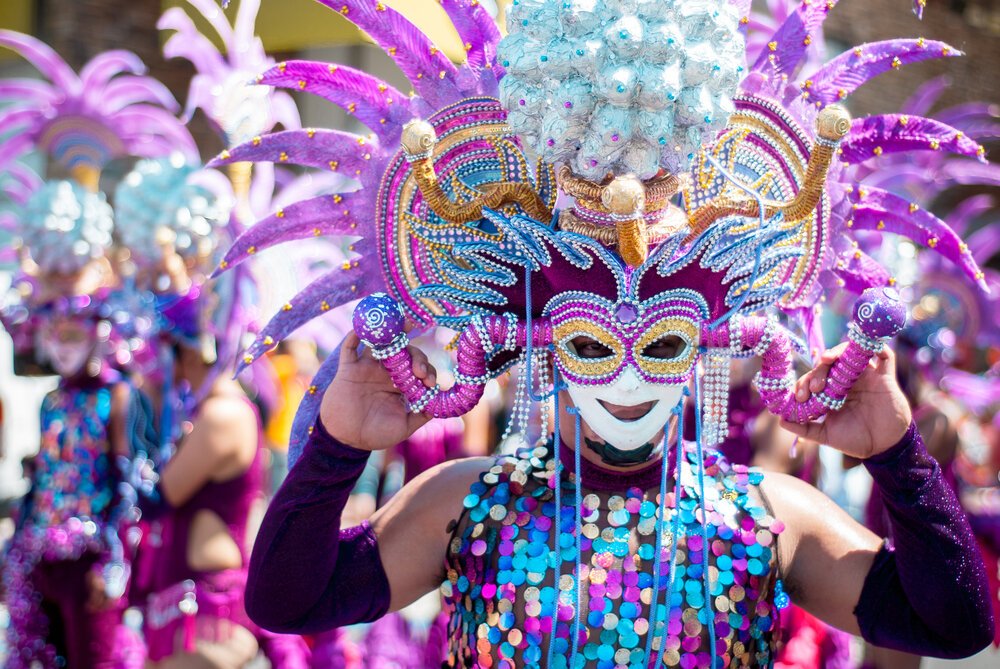
Mardi Gras is iconic with the city of New Orleans. This celebration dates back as early as the 17th and 18th centuries and is traditionally held before the religious observation of Lent. Festivities begin with Carnival season starting in January and leading all the way to the main celebration of Mardi Gras which takes place on the eve of Ash Wednesday.Facts & Tips for Mardi Gras Key Takeaways The History of Mardi Gras Origins of Mardi Gras Mardi Gras has its origins in ancient Roman festivals, particularly the pagan celebration of Lupercalia. Lupercalia was a fertility festival held in mid-February, which involved rituals and feasting. Over time, as Christianity spread, the festival evolved into a period of excess and indulgence before the solemn season of Lent. Today, Mardi Gras is celebrated as a time of revelry and merriment, with parades, parties, and elaborate costumes. One of the key traditions of Mardi Gras is the throwing of beads and other trinkets from parade floats. This tradition is said to have originated from the practice of throwing food and other items to the crowds during medieval festivals. The throwing of beads and trinkets has become a symbol of generosity and abundance during these celebrations. Mardi Gras is deeply rooted in the history and culture of New Orleans, where it has been celebrated since the city’s founding in 1718. The festival has evolved over the centuries, incorporating elements from various cultures and traditions, but it remains a vibrant and integral part of the city’s identity. Evolution of Mardi Gras Celebrations Mardi Gras celebrations have evolved significantly over the years, adapting to the changing times and cultural influences. One important aspect of this evolution is the incorporation of new traditions and customs. Parades became a central element of Mardi Gras celebrations, with elaborate floats and costumed participants captivating the crowds. Another significant change in Mardi Gras celebrations is the increased emphasis on inclusivity and diversity. Today, Mardi Gras events welcome people from all walks of life, regardless of their background or identity. This shift has led to the celebration becoming a vibrant and inclusive festival that embraces the spirit of unity and acceptance. In recent years, technology has also played a role in the evolution of Mardi Gras celebrations. Social media platforms and online communities have allowed people to connect and share their Mardi Gras experiences, creating a global network of Mardi Gras enthusiasts. This digital presence has expanded the reach of Mardi Gras beyond its traditional locations, making it a truly global celebration. Significance of Mardi Gras Traditions Mardi Gras traditions hold great significance in the celebration of this festive event. These traditions have been passed down through generations and continue to play a vital role in the cultural fabric of Mardi Gras. One important tradition is the king cake, a sweet pastry that is enjoyed during Mardi Gras season. The cake is typically decorated with vibrant colors and contains a hidden plastic baby figurine. Whoever finds the baby in their slice of cake is said to have good luck and is responsible for hosting the next Mardi Gras party. Another significant tradition is the throwing of beads during Mardi Gras parades. This tradition dates back to the early 1900s and has become synonymous with Mardi Gras celebrations. Beads are thrown from parade floats to the crowd, and catching them is considered a symbol of good luck and prosperity. In addition to these traditions, Mardi Gras also incorporates lively music, vibrant costumes, and elaborate floats, all of which contribute to the festive atmosphere of the celebration. Mardi Gras Around the World Mardi Gras in New Orleans Mardi Gras in New Orleans is one of the most famous and vibrant celebrations in the world. The city comes alive with music, parades, and a sense of revelry that is unmatched. Beads are a central part of the Mardi Gras experience in New Orleans. These colorful strands of beads are thrown from floats during parades and are eagerly collected by attendees. The tradition of throwing beads dates back to the early 1900s and has become synonymous with Mardi Gras in New Orleans. In addition to beads, another iconic symbol of Mardi Gras in New Orleans is the King Cake. This delicious pastry is typically decorated with purple, green, and gold icing, representing justice, faith, and power. Inside the cake, a small plastic baby is hidden, and whoever finds the baby is said to have good luck for the coming year. During Mardi Gras in New Orleans, the streets are filled with vibrant costumes and masks. People of all ages and backgrounds come together to celebrate and embrace the spirit of Mardi Gras. It’s a time to let loose, have fun, and immerse oneself in the rich cultural traditions of New Orleans. Mardi Gras in Rio de Janeiro Rio de Janeiro is known for its vibrant and extravagant Mardi Gras celebrations. The city comes alive with music, dance, and colorful costumes during this festive time. One of the highlights of Mardi Gras in Rio de Janeiro is the samba parade, where samba schools compete for the title of the best performance. These samba schools spend months preparing for the parade, creating elaborate floats and costumes that showcase their creativity and passion for the celebration. In addition to the samba parade, Mardi Gras in Rio de Janeiro also features street parties known as blocos. These blocos attract thousands of people who gather to dance, sing, and enjoy the lively atmosphere. Each bloco has its own theme and music, creating a unique experience for attendees. If you’re planning to experience Mardi Gras in Rio de Janeiro, here are some tips: Join the vibrant energy of Mardi Gras in Rio de Janeiro and immerse yourself in the rich culture and festivities of this iconic event. Mardi Gras in Venice Mardi Gras in Venice is a unique and enchanting experience. The city’s rich history and vibrant culture come alive during this festive season. One of the highlights of Mardi Gras in Venice is the elaborate masks worn by participants. These

